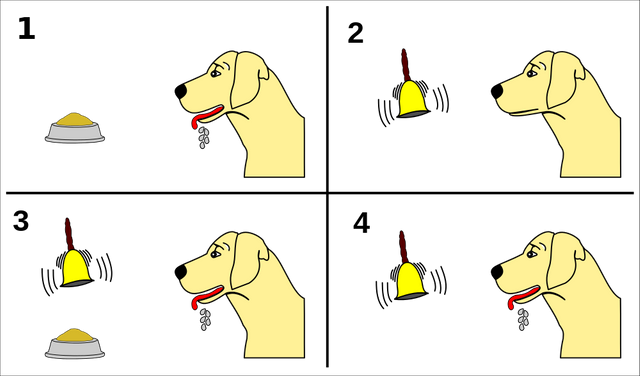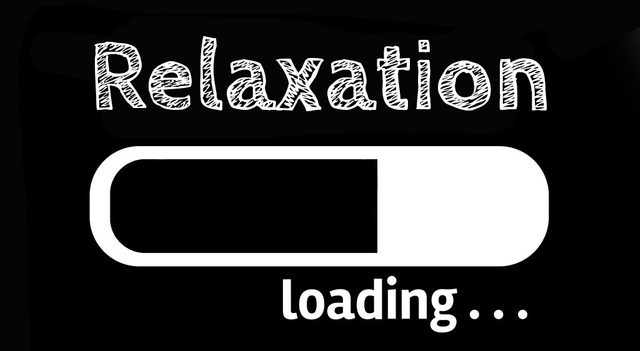The Strange Science of Controlling Emotions

The smell of the ocean always takes me back to my childhood.
Every summer my family would take a trip to Bethany Beach in Delaware. Several of my friend’s families would go too. I have so many memories there: saltwater taffy, boogie boarding, mini golf, eating crabs…
For almost a decade now, I’ve lived five minutes away from the beach in Florida, but whenever I smell the salt water air, I always think of Delaware.
Have you ever noticed how a sound or a song, a smell, a picture, or a touch, can cause a memory to come flooding into your consciousness?
It can change how you feel in an instant and it’s not always a good thing.
But this process can be controlled.
You can train yourself to mentally and emotionally respond in very specific ways to signals and triggers that you design.
In Neuro Linguistic Programming (NLP), a therapeutic style developed in the 80’s, this process is called “Anchoring” and it’s an effective way to take control of your emotions and improve your mental state.
With just a little bit of practice you can access any mental state, like deep relaxation or intensive focus, automatically, and on-demand.
Stimulus Response:
First things first: let’s start with a few definitions.
In NLP, anchoring refers to the process of associating an internal response with an external (or internal) trigger. At its core, anchoring is a conditioned response to a stimulus.
It can help to think back to Pavlov and his dogs. In 1901, Russian psychologist Ivan Pavlov conducted an experiment where every day he would ring a bell before feeding his dogs.

It didn’t take long for the dogs to associate the sound of the bell with the food. Pavlov discovered that the sound of the bell was enough to cause the dogs to salivate, regardless of when it was rung, or if food actually followed.
According to author Michael Huchison in his book Mega Brain Power, we create mental anchors constantly, whether we realize it or not.
“Anchors can be created under virtually any circumstances— we do it all the time, when we unconsciously link a specific slogan with a specific product (“Just Do It”), or a signal with a feeling state (a Christmas tree, the flashing lights on a police car), or a signal with an action (the stoplight turns red).”
And while it typically happens automatically , we can choose to set our own anchors.
We can connect a state of deep relaxation with a specific mental image or a song. We can connect a state of focus with a word, or a state of contentment with a hand gesture.
Imagine if you could calm yourself instantaneously, regardless of where you are, or what you’re going through. The possibilities are endless.
How to Create an Anchor:
The first step in creating an anchor is to get into the emotional/mental state that wish you to anchor.
For something simple, like relaxation, this is a fairly straight forward process, as there are many ways to relax. But for other emotional states that can’t be easily produced on-demand, like deep focus, or profound happiness, you have to take a different approach.
In NLP, a practitioner will generally use some form of hypnosis, guiding a patient into a highly suggestible trance state. In this state, the patient can be led to experience a specific emotional state, and an anchor can be set.
However, it’s also possible to recreate the experience of any emotional state on our own, without a hypnotist, using only our imagination.
According to Huchison, “The scientific evidence is very clear: What our mind perceives in the form of vivid mental imagery our body tends to believe is actually true. The simple act of vividly imagining a scene makes it a real experience. Dr. Edmund Jacobson, a physiologist and the developer of Progressive Relaxation Therapy, established this link many years ago by having people visualize themselves running. He then measured their minute muscular contractions and found they were exactly like those that would have been produced if they had actually been running.”
By vividly imagining a scenario in which you experienced a powerful mental or emotional state, you will actually re-experience that state in very real and tangible way.

Once you are actively (and intensely) feeling the emotional or mental state that you wish to anchor, the next step is to create the anchor itself – the trigger that will cause you to automatically experience the desired mental/emotional state at some point in the future
You have a few options here, though a combination of some of the following typically works the best:
- Visual Anchor: The mental image of a symbol, person, place, or thing.
- Auditory Anchor: Any mentally spoken phrase, word, song, or sound.
- Kinesthetic Anchor: Imagining a comforting hand on your shoulder, making a hand motion (such as making a circle with thumb and pointer finger) or a bodily gesture (placing your hand on your stomach).
By repeatedly associating the same anchor to a specific mental state, you will be able to trigger the state automatically with the anchor alone.
Just like Pavlov and his dogs.
Action Step - Anchoring a Relaxation Response:
In the modern world, chronic stress is a big problem for a huge number of people. Having a reliable way to relax is important, and can make a big difference in your quality of life.
So to bring this all together, I will walk you through the simple steps of anchoring a relaxation response that you can use as often as you’d like.

We are going to use a simple hand gesture as an anchor: making a circle with your thumb and pointer finger, resting on your chest.
Step 1: Sit or lay down as comfortably as possible and rest your hand on your chest with your thumb and your pointer finger making a circle.
Step 2: Take several deep breaths and consciously relax all of your muscles. Start with your feet and your toes, and work up through your body. It’s important to release as much muscle tension as possible.
Step 3: Focus your awareness on the physical sensations of your abdomen as you breathe deeply into your diaphragm. Feel your stomach expand with each inhale, and relax with each exhale. If you find your mind wandering (and it will), gently bring your focus back to your stomach.
Step 4: As you continue to breathe, your heart rate will slow down, your nervous system will relax, and you will find yourself in a deep state of relaxation. At this point, focus your awareness on the hand resting on your chest. Mentally connect your hand position and gesture to the deep relaxation you currently feel.
Step 5: Repeat this daily. It can take up to several weeks, but after a while, you will be able to trigger the same relaxation response by simply by placing the circle hand gesture over your chest.
It’s a powerful way to manage stress, and the more you use it, the stronger it will become.
Bonus - Turbocharge your Anchor:
One way to greatly speed up the time it takes to set an anchor is to use brainwave entrainment technology, to alter your mental state.
How you feel changes your brainwaves in a very specific way. In fact, there is a predictable brainwave pattern directly associated with just about every mental state. But amazingly, the opposite is also true.You can change your mental state, and how you feel, by changing your brainwaves with an external stimulus, like audio.
So brainwave entrainment can be used to induce a specific mental state that you would like to anchor, thereby cutting the time it would normally take to get into that mental state.
But it can also help by enabling you to quickly enter a Theta brainwave state, which is very similar to the trance state of hypnosis.
In the trance state, our ability to visualize and imagine complex scenarios is exponentially more powerful, and like hypnosis, we are far more open to suggestion. Even when the suggestions come from ourselves.
In this way, an anchor is almost like a post-hypnotic suggestion, and we are much more likely to accept the association.
I created a powerful stress/anxiety relieving brainwave entrainment track for you to try: https://steemit.com/music/@mindover/extremely-powerful-stress-anxiety-relief-audio-warning-highly-sedating-do-not-listen-while-driving
Conclusion:
Most of the time, our behavior is largely a byproduct of our mental and emotional state. And when we don’t have control, it’s easy to feel overwhelmed. But the truth is, we do have control.
We may not be able to change our circumstances, but we can change our mental state, and as a result, our behaviors.
We can use techniques like anchoring to change the way we feel, whenever we might need to.
I upvote U
Hi mindover,
I think you may like this article I just wrote on a book. I’ve posted it 10 min ago ;)
It had a great impact in my life and I really wanted to share it with this community. I’ll let a few comments on posts about life, yoga and spirituality. Enjoy ;)
https://steemit.com/life/@glitterfart/the-key-to-happiness-and-the-purpose-of-life-is-not-in-religions-it-s-in-this-beautiful-book
Interesting information, thanks!
You're welcome!
Hiya, I have just selected your post to my Daily Pick section. You deserve more for your post. I hope you get more votes :-)
https://steemit.com/life/@logic/pick-of-daily-most-interesting-and-most-underrated-posts-from-ordinary-steemit-users-art-science-philosophy-psychology
Aw thanks @logic I really appreciate it!
The popular memory techniques talk about a hook word and associating it with the word or phrase to remember.
Mind can be fooled. Or trained.
Anchoring sounds similar to that. In this age where mind does not take a break the most difficult task is to make time. Actually I have lot of time, just that I am lazy :)
A post worth spending time on. Liked to read it. Who knows maybe my lazy mind and body starts practicing this in future and does a favor on itself.
Now that "Feed" is active I would look forward to great posts like this from you. All the best.
And yes, Thanks for sharing this with us :)